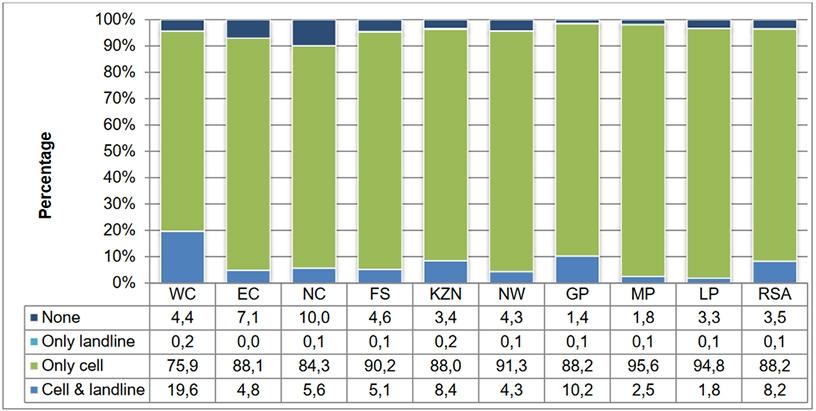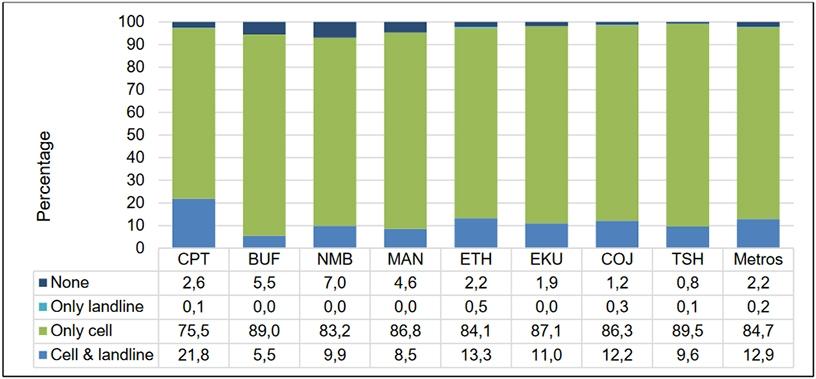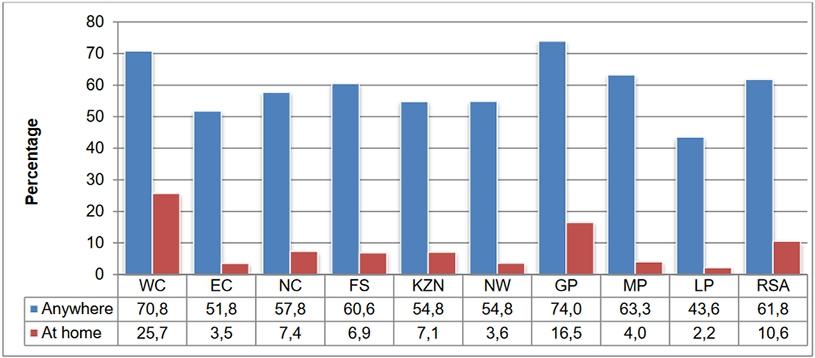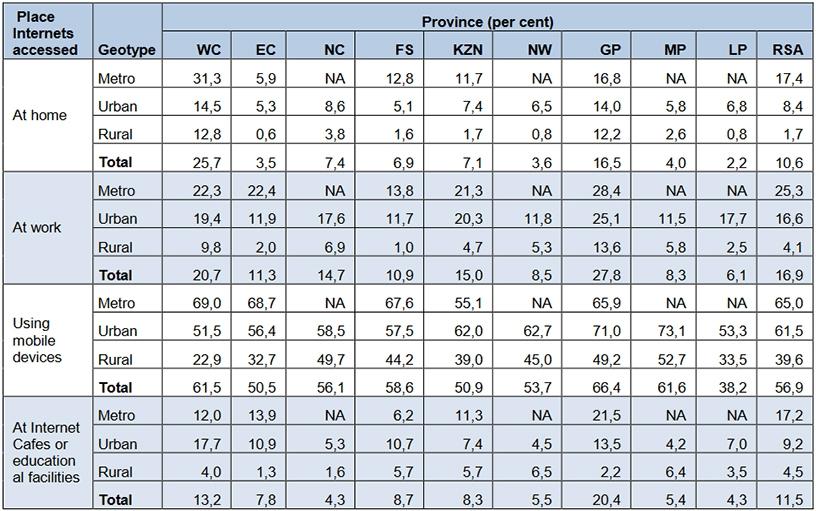
In SA, 88.2% of households had access to at least one cellphone in 2017, up from 87% the year before. This is according to Statistics South Africa's General Household Survey for 2017 published yesterday.
The survey, conducted by Stats SA from January to December 2017, found that only 3.5% of South African households did not have access to either a landline or a cellular phone in 2017, meaning 96.5% of households do. There is no change to the figure from the 2016 General Household Survey, which also found that 3.5% of households did not have access to a phone.
Stats SA says in 2017, inadequate access to telephones was most common in the Northern Cape, where 10% of households did not have access, and the Eastern Cape, where 7.1% did not have a phone.
"Communication plays an important role in the fundamental operation of a society. It links people and businesses, facilitating communication and the flow of ideas and information, and coordinating economic activities and development," Stats SA says.
The need for both a landline and a cellphone seems to be on the decline, as 8.2% of households had access to both in 2017, a drop from 9.4% in 2016. Meanwhile, only 0.1% of households in SA have only a landline.
Stats SA found that households in historically rural provinces, such as Mpumalanga (95%) and Limpopo (94.4%), were reliant on the more accessible cellphone than landlines, followed by North West (91.3%) and the Free State (90.2%). The Western Cape had the lowest percentage of households that exclusively used a cellphone, at 75.9%.
"By contrast, a combination of both cellular phones and landlines in households were most prevalent in the more affluent provinces, namely Western Cape (19.6%) and Gauteng (10.2%)," the survey found.
Only 1.8% of households in Limpopo had access to both mobile phones and landlines, and only 2.5% of households in Mpumalanga.

When comparing SA's biggest metros, Stats SA found households without access to landlines or cellphones were most common in Nelson Mandela Bay (7%), Buffalo City (5.5%) and Mangaung (4.6%). Only 0.2% of South African households living in metropolitan areas exclusively used landlines, compared to 84.7% that exclusively used cellular phones.
The exclusive use of cellular phones was most common in the City of Tshwane (89.5%), Buffalo City (89%), Ekurhuleni (87.1%) and Mangaung (86.8%). Over one-fifth (21.8%) of households in Cape Town used both landlines and cellphones compared to 5.5% in Buffalo City and 8.5% in Mangaung.

on the rise
Overall access to the Internet has increased over the years; however, only a small number of South Africans currently have access to the Internet at home.
Around 61.8% of South African households had at least one member who used the Internet at home, their places of work or study, or at Internet caf'es. This is an increase from 59.3% in 2016, 53.3% in 2015 and 48.7% in 2014.
Access to the Internet was highest in Gauteng (74%), the Western Cape (70.8%) and Mpumalanga (63.3%); and lowest in Limpopo (43.6%) and the Eastern Cape (51.8%).
However, access to the Internet at home remains low, with only one-tenth of South African households having Internet in their homes. Access to the Internet at home was highest among households in the Western Cape (25.7%) and Gauteng (16.5%); and lowest in Limpopo (2.2%) and the Eastern Cape (3.5%).

The survey found that mobile access to the Internet has made it much more accessible to households in rural areas. Nationally, 56.9% of households access the Internet using mobile devices, which was far higher than those that access the Internet at home (10.5%), at work (16.9%) and elsewhere (11.5%). The national average of 56.9% was also an improvement compared to the 53.9% of households that accessed the Internet using mobile devices in 2016.
Although the use of mobile Internet access devices in rural areas (39.6%) still lags behind its use in metros (65%) and urban areas (61.5%), it is much more common in rural areas than any of the alternative methods.
Stats SA found that while 17.4% of households in metropolitan areas had access to the Internet at home, this was true for less than 1% of rural households in the Eastern Cape (0.6%), North West (0.8%) and Limpopo (0.8%).
Households were generally more likely to have access to the Internet at work than at home, at Internet caf'es or at educational institutions. Households in Gauteng (27.8%) and Western Cape (20.7%) were most likely to access the Internet at work while those in Limpopo (6.1%) were least likely to.

Share